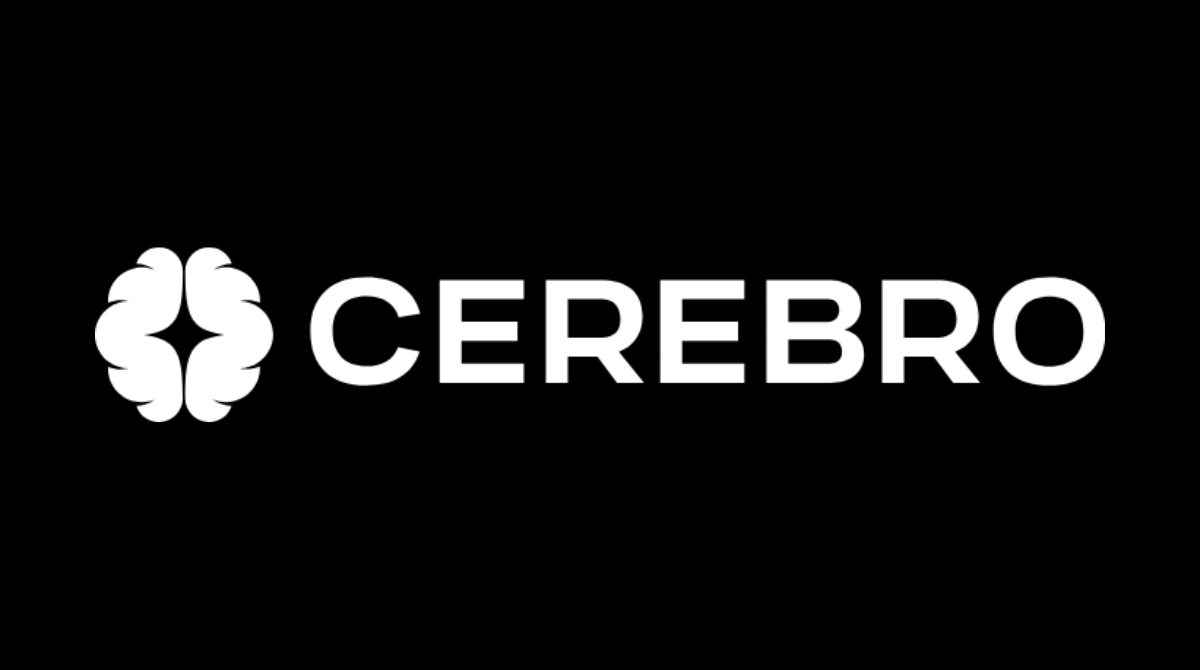As a crypto-native founder with a background in corporate finance, Maverick has been in the industry since 2017, long enough to watch the space expand from a handful of major coins into today’s sprawling mix of tokens, NFTs, and layer-two (L2) networks. As the ecosystem grew, so did a common problem: managing portfolios across all those moving parts was complicated and inefficient.
That challenge became the foundation for Cerebro, the company Maverick co-founded alongside cofounder Memories. Billed as a next-generation portfolio manager, Cerebro helps users track, grow, and optimize their crypto holdings in one place. With tools like an AI strategy engine, real-time risk alerts, and cross-chain support, the platform aims to simplify what has become increasingly complex for investors at every level.
In our conversation ahead, Maverick shares how his own experiences shaped Cerebro, the lessons he’s learned from building in web3, and what keeps him grounded while leading in one of the most unpredictable industries today.
Note: This transcript was edited for length and clarity.

OpenSea: Let’s start at the beginning. Where did you grow up, and what early experiences shaped the way you think about technology today?
Maverick: I was born and bred in Singapore. I grew up in a family that put a strong emphasis on learning and doing well in school, which shaped my discipline from an early age. I was fascinated by technology because it gave me access to information and data I could not get anywhere else. That access sharpened my thinking and made me realize how powerful it is to work with facts rather than assumptions. I would say that, in many ways, that curiosity for truth and the willingness to question what is really there continue to shape how I think about risk and technology.
OpenSea: You first stepped into crypto in 2017, which was a defining year for the industry but also comparatively early to those who got in during the 2021 bull market. What pulled you in, and what were the parts that felt most exciting and most intimidating at the time?
Maverick: Yeah, I am not sure if you might laugh at this, but I am somewhat paranoid. I have always had this lingering fear that a centralized entity could just shut off all of my personal finances and leave me helpless and stranded, cut off. When I was first introduced to crypto by my friend, he brought this idea of decentralized ownership that really spoke deeply to me. It was not about making money or speculation. The primary idea that caught hold of me was being able to firmly control and hold my wealth without needing permission. That was incredibly empowering. It is also why the first crypto token I bought was Ethereum. I did not see it just as a currency, but as an entire ecosystem of possibilities. So I would say back in 2017 it was very exciting, but also very intimidating. It has been a long journey.

OpenSea: Every startup begins with a pain point—was that paranoia the pain point that Cerebro was trying to address?
Maverick: I think that has some part to play because I like to have visibility and control over what is happening. One thing that became very apparent when I left my corporate job in 2023 and went into crypto full time was my inability to really see all of my assets. It was difficult to track where everything was. I had a lot of wallets, did quite a bit of airdrop farming, was involved in many protocols, and did angel investing. It became very complicated, and not being able to see all of that clearly was a major issue. On top of that, the existing solutions did not give me relevant insights beyond just showing the digits across my different wallets. They were giving me face value numbers, but not insights about my portfolio, what I should be doing with it, or what kinds of optimization or discovery I could apply. That was the big journey toward starting and building Cerebro.
OpenSea: For someone who’s never used a portfolio manager, what does Cerebro do to make managing crypto and NFTs easier?
Maverick: I think we do two things. First, we help bring everything together—your wallets, your chains, your protocols, your NFTs—so you finally see the whole picture of your portfolio in one place. Second, we go beyond just showing the balances you hold in currencies like Ethereum or Bitcoin. We help you understand the context: what it means if most of your portfolio is indexed to meme coins, how much usable liquidity you actually have, and how much risk you are carrying at any given time. In short, we turn raw numbers into clarity so you can make smarter decisions.
OpenSea: One of Cerebro’s defining features is the AI strategy engine. How does that work in practice, and why is it valuable for an investor?
Maverick: We think about the AI strategy engine as a dedicated portfolio analyst that works for you 24/7. It takes into account all of your on-chain data across wallets, tokens, NFTs, and protocols, and runs various optimization models against them. In practice, this means it can surface smarter allocations, highlight concentration risks, and even suggest opportunities that fit your profile. That goes beyond the current iteration of the product but represents where we are heading. The real value is personalization. Instead of giving you generic strategies that may or may not work, Cerebro uses your on-chain data to deeply understand you and then surface new insights and recommendations tailored to you.
OpenSea: Can you talk a little bit about Cerebro’s features? How do you find that sweet spot between crypto newbies and the power users who have been driving innovation? Crypto is still emerging, so it naturally attracts newcomers. Power users want advanced tools, but beginners need clarity, even just understanding how to open a wallet. How do you design Cerebro so it works for both groups?
Maverick: Great question. We designed Cerebro with layered complexity. At the surface level, beginners see a very clean portfolio view with simple insights, like how much risk they are carrying or how much liquidity they have. Power users, on the other hand, can dig much deeper. They can backtest strategies, request recommendations, and analyze across different portfolio compositions. It is the same product, but as users grow more comfortable, more levers and tools are revealed. This way, the product feels approachable on day one but still powerful months later.
OpenSea: Since you are building for a space that is global by nature, how do you think about designing Cerebro for users across different markets, each with their own norms?
Maverick: So, one thing to know is that the beginnings of Cerebro are very humble. When we first started building the product, I basically created a Telegram group chat called Cerebro 100, and I went out to my friends to get them involved in the project. I would arrange hundreds of calls and say, hey, this is something I am building. Do you have a similar pain point? Is this something you would be interested in testing? By virtue of the fact that crypto is already very global, you realize you are touching people across different networks, industries, and countries. That gave us a lot of good insights and input. It was not just one geography or type of user. It was varied and colorful feedback that helped shape the product.
OpenSea: Where did the name Cerebro come from?
Maverick: It means “brain” in Spanish. It is also the name of the device Professor X used in the X-Men movies. We use it because it represents intelligence and helps you see more, understand more, and make smarter decisions. It ties well with what we are building with our AI engine.
OpenSea: And your anon name, Maverick—it gives Top Gun, Tom Cruise vibes. Where did it come from, and how has it influenced you as a founder?
Maverick: I wish it was as cool as Top Gun. The truth is, I picked it decades ago because it spoke to my contrarian streak and independent thinking. I value originality, and I believe you should push your own ideas instead of just doing what society tells you. That belief stuck with me.

OpenSea: How did you guys conceptualize the visuals of it and the UX of it all? Did you consult with behavioral scientists? Did you consult with UX professionals?
Maverick: I think the biggest factor was that we are deeply crypto-natives. I have been in crypto since 2017. I know this is something I faced myself when I tried to keep track of my assets. I had the opportunity to try out many products over the years, products of similar variety that allowed you to track assets, which I am sure you yourself would have tried too. But they did not really give me the ability to understand my portfolio the way I mentioned before—how it is broken down across different sectors, how liquid it is, how much risk you are carrying. That personal insight and experience made a big difference in how the product was shaped. Of course, we also took in a lot of feedback from the early community we were building. So I think it is a combination.
OpenSea: I am assuming many of the people who gave you feedback early on are now your NFT holders. Tell me about the NFT. Why do people hold it? What kind of access do they get? And was it also a way of rewarding your earliest contributors?
Maverick: The NFTs allow us to identify who the real community members are versus those who only talk about it but do not have real exposure in terms of monetary holdings. This helped us differentiate the true believers from the bystanders. There is nothing wrong with not holding an NFT, but holders get special access. They can interact directly with the team, see what is coming in the next few product cycles, and experiment with features to give feedback. They also get a reward multiplier. Our reward currency is $GEMS, and NFT holders can collect them passively, while most other users have to perform actions or be active. It is like being able to get rewards even from the backseat.
OpenSea: Looking five years ahead, what big shifts do you expect in crypto portfolio management, and how is Cerebro preparing for that future?
Maverick: I think it is going to be more automated and personalized. With AI, you should not have to spend all of your time optimizing a portfolio. You should know your expected returns, your risk tolerance, your maximum drawdown, and then have it executed for you. It should be personalized, keeping you updated without requiring you to make every decision yourself.
OpenSea: Fantastic, thank you Maverick. It’s been a pleasure speaking with you. I am excited to see what you are building, because I have seen others attempt similar things, and there is a real need for this.
Maverick: It has been great chatting. Thank you for your time.
The views expressed in this interview do not necessarily reflect the views of OpenSea. This content is provided for informational purposes only and should not be construed as financial or trading advice. References to specific projects, products, services, or tokens do not constitute an endorsement, sponsorship, or recommendation by OpenSea. OpenSea does not guarantee the accuracy or completeness of the information presented, and readers should independently verify any claims made herein before acting on them. Readers are solely responsible for conducting their own due diligence before making any decisions based on this content.





.avif)
.png)
.png)




.png)
.png)